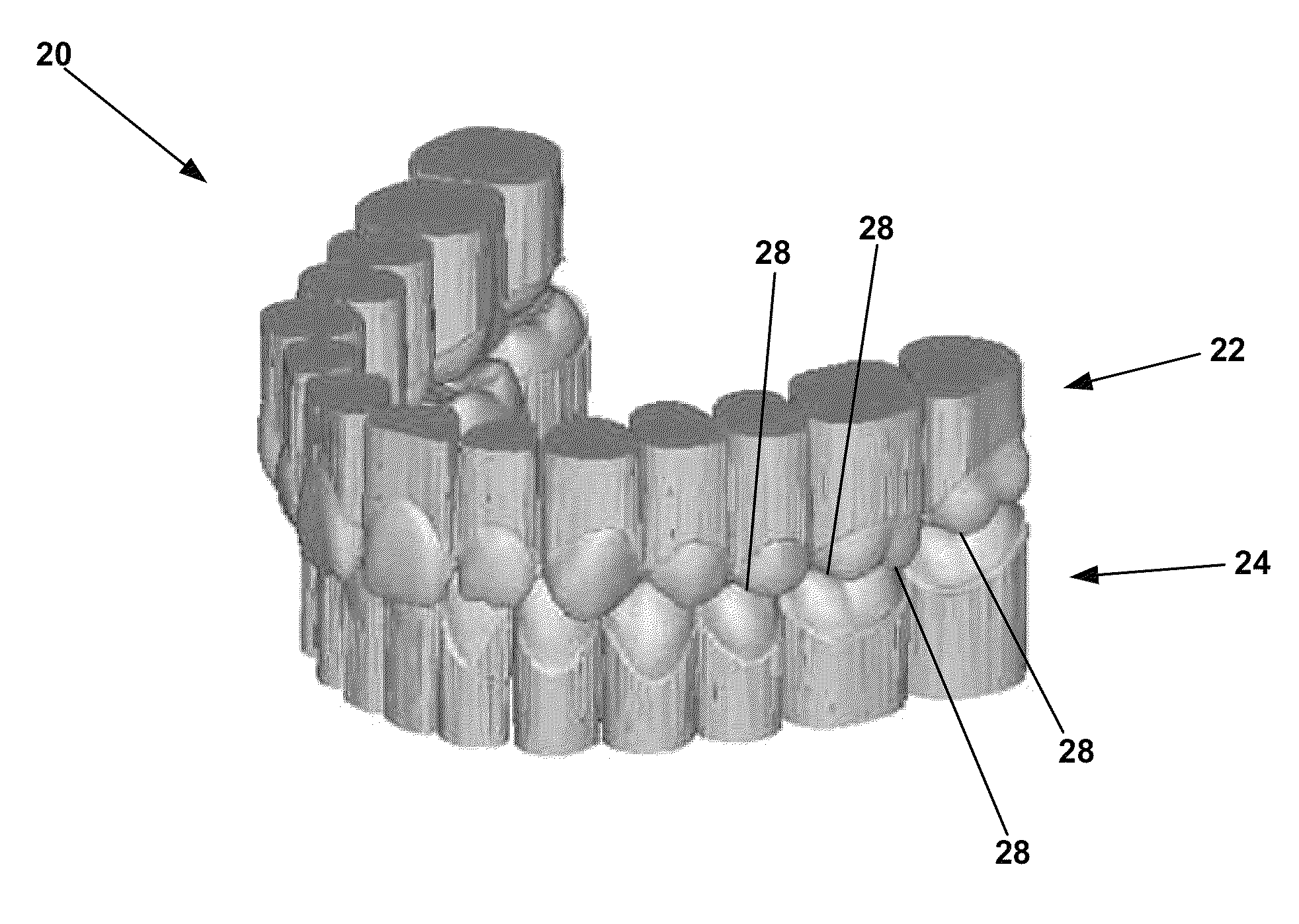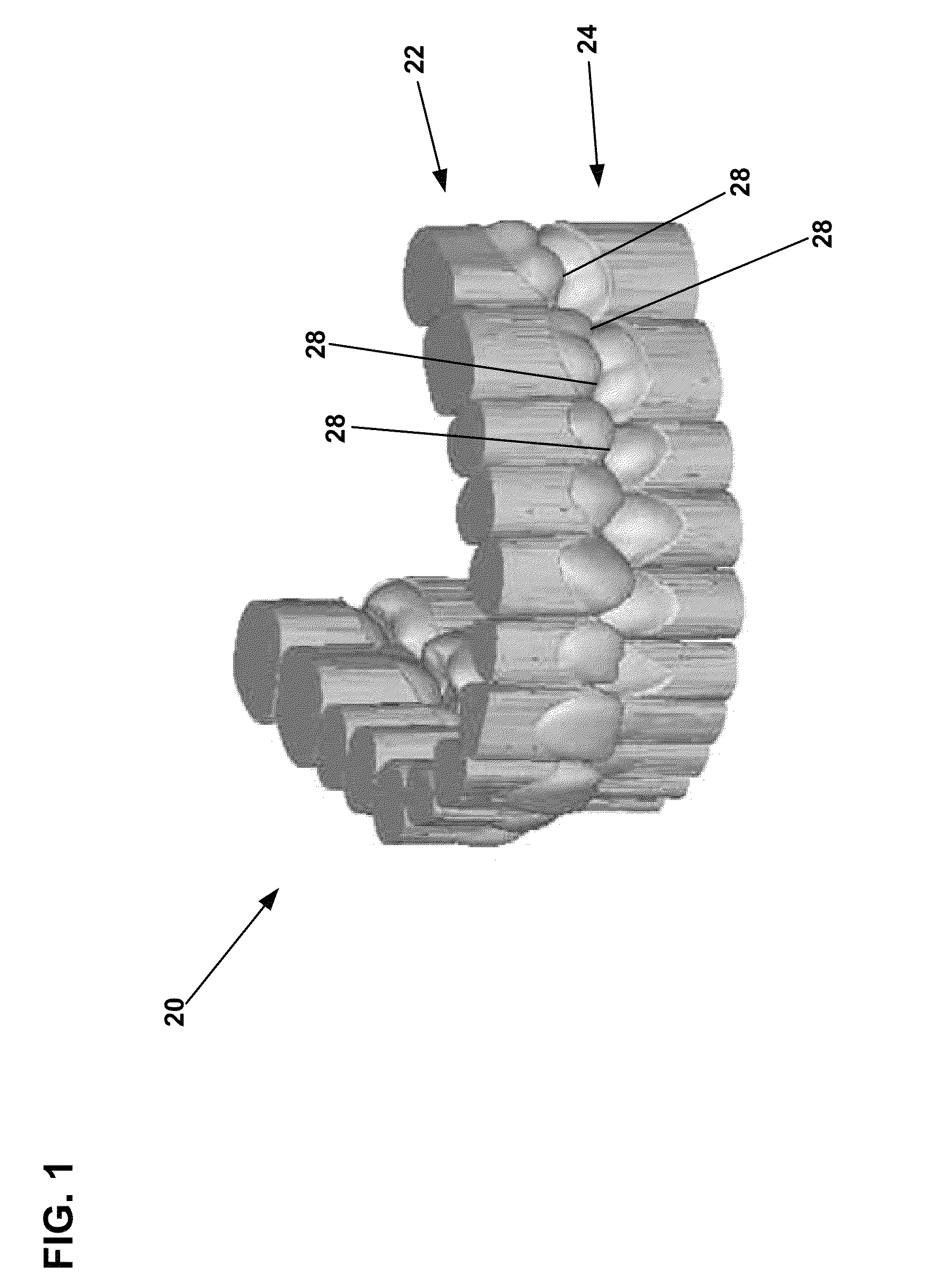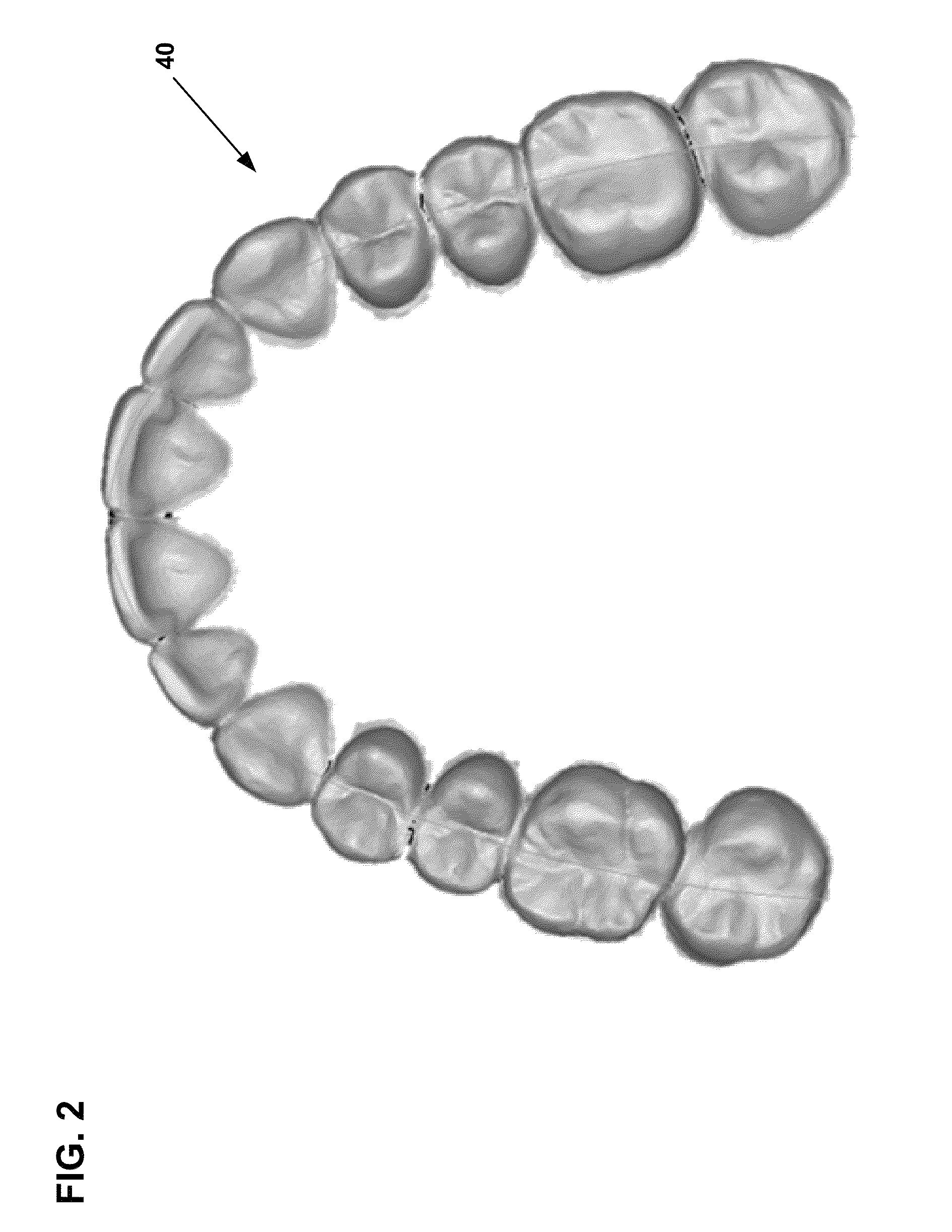System and method for evaluating orthodontic treatment
a system and orthodontic treatment technology, applied in the field of system and method for evaluating orthodontic treatment, can solve problems such as unduly out of alignment of individual teeth
- Summary
- Abstract
- Description
- Claims
- Application Information
AI Technical Summary
Benefits of technology
Problems solved by technology
Method used
Image
Examples
Embodiment Construction
[0027]Referring now to the drawings and in particular to FIG. 1, there is shown a scanned digital representation 20 of a patient's complete upper and lower arches, 22 and 24. Such a digital representation of a patient's teeth is sold under the trademark E-Model®, owned by Geodigm Corporation of Chanhassen, Minn. The method and system for creating such a virtual image is shown and described in U.S. Pat. No. 6,579,059. The virtual model 20 may be created by first taking a conventional plaster cast of the patient's upper and lower arches. The cast is then electronically scanned and saved as a three dimensional virtual model. Such models provide an excellent tool for evaluation by the dental practitioner. Such digital models provide benefits by storing an accurate record of the patient's teeth and gums without requiring space or a suitable controlled environment for storing the plaster casts. Moreover, the digital models allow for precise measurement from the virtual surfaces for evalua...
PUM
 Login to View More
Login to View More Abstract
Description
Claims
Application Information
 Login to View More
Login to View More - R&D
- Intellectual Property
- Life Sciences
- Materials
- Tech Scout
- Unparalleled Data Quality
- Higher Quality Content
- 60% Fewer Hallucinations
Browse by: Latest US Patents, China's latest patents, Technical Efficacy Thesaurus, Application Domain, Technology Topic, Popular Technical Reports.
© 2025 PatSnap. All rights reserved.Legal|Privacy policy|Modern Slavery Act Transparency Statement|Sitemap|About US| Contact US: help@patsnap.com



